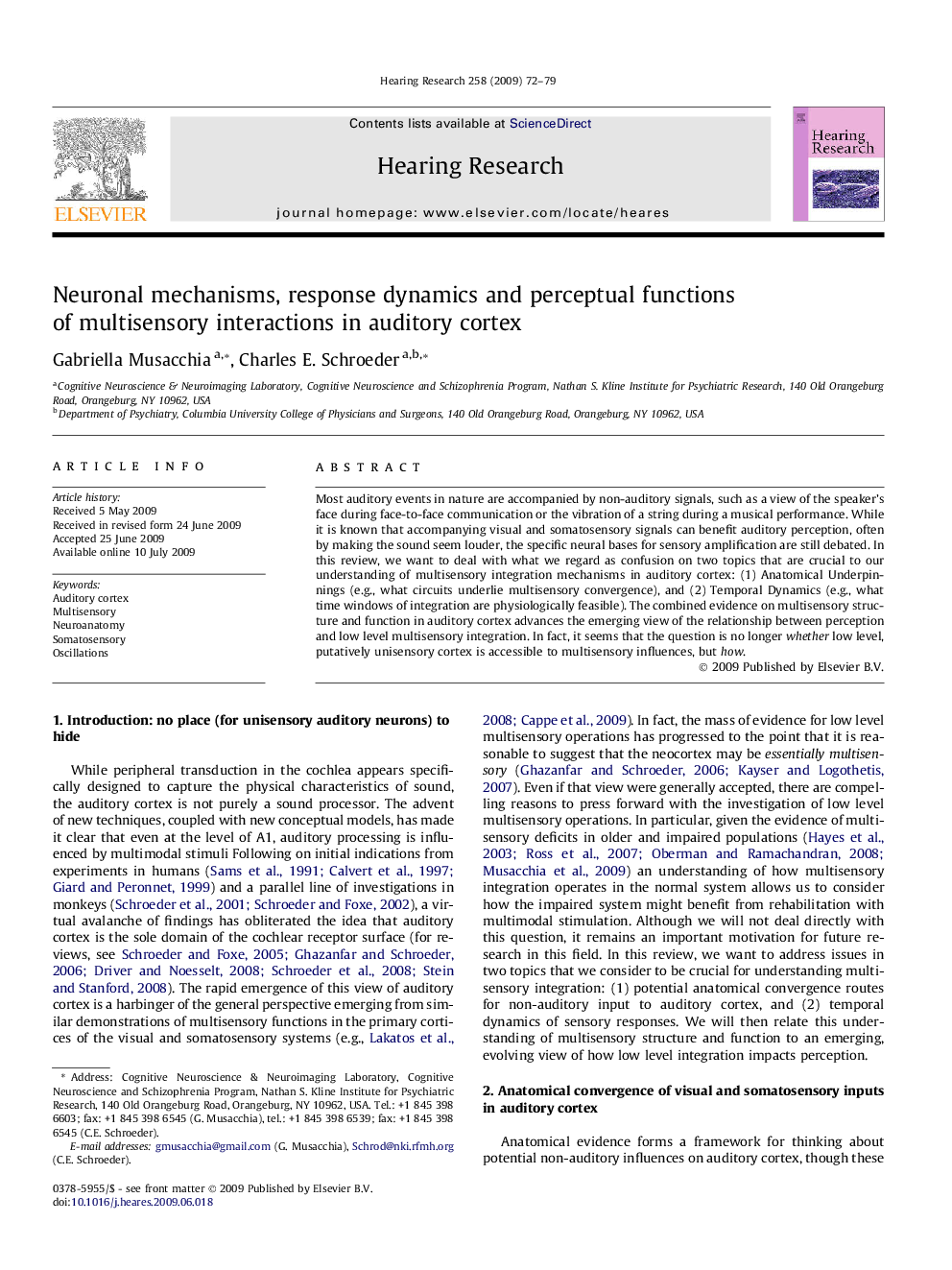| Article ID | Journal | Published Year | Pages | File Type |
|---|---|---|---|---|
| 6287753 | Hearing Research | 2009 | 8 Pages |
Abstract
Most auditory events in nature are accompanied by non-auditory signals, such as a view of the speaker's face during face-to-face communication or the vibration of a string during a musical performance. While it is known that accompanying visual and somatosensory signals can benefit auditory perception, often by making the sound seem louder, the specific neural bases for sensory amplification are still debated. In this review, we want to deal with what we regard as confusion on two topics that are crucial to our understanding of multisensory integration mechanisms in auditory cortex: (1) Anatomical Underpinnings (e.g., what circuits underlie multisensory convergence), and (2) Temporal Dynamics (e.g., what time windows of integration are physiologically feasible). The combined evidence on multisensory structure and function in auditory cortex advances the emerging view of the relationship between perception and low level multisensory integration. In fact, it seems that the question is no longer whether low level, putatively unisensory cortex is accessible to multisensory influences, but how.
Related Topics
Life Sciences
Neuroscience
Sensory Systems
Authors
Gabriella Musacchia, Charles E. Schroeder,
